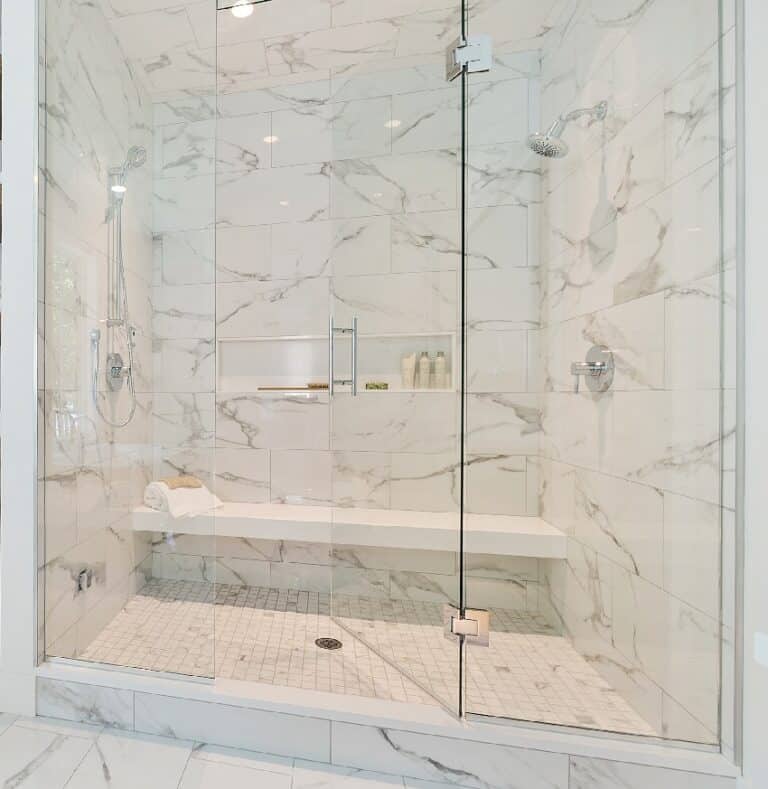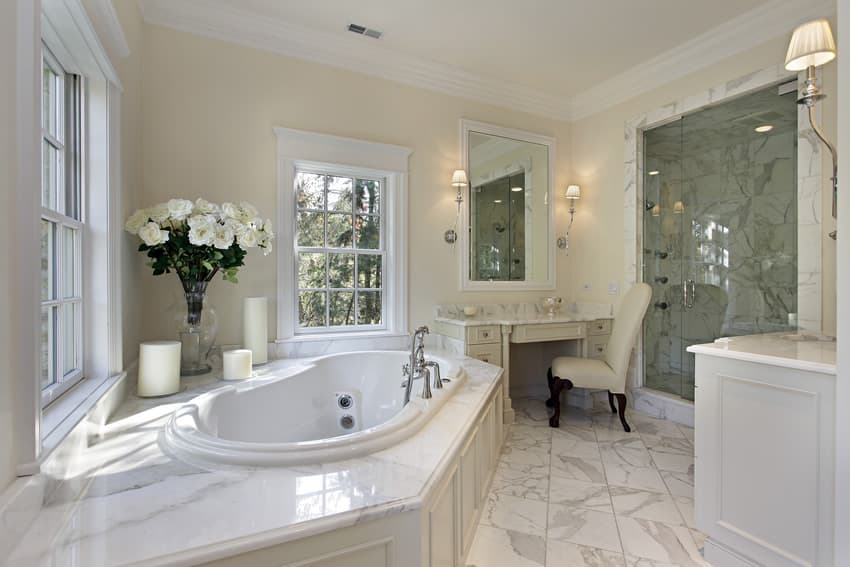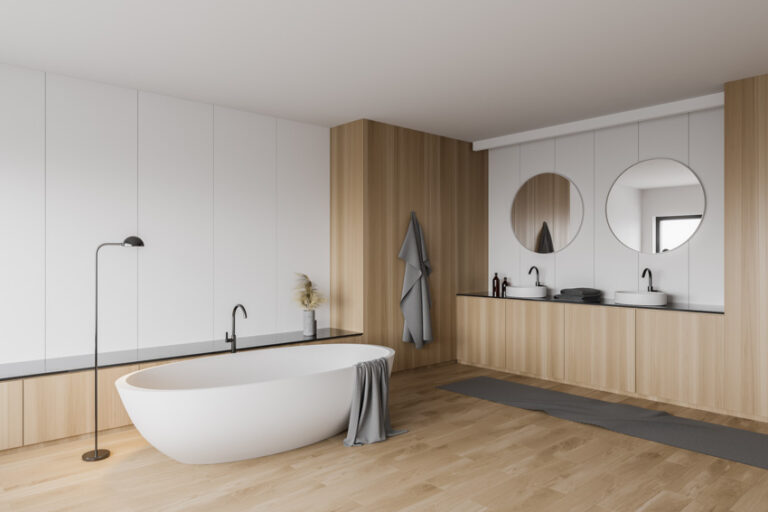Carrara Marble Shower (Bathroom Designs)
In this Carrara marble shower guide you’ll see what it is, reasons why this material is good for showers, how it’s used as tiles, and the best Carrara marble cleaning tips.
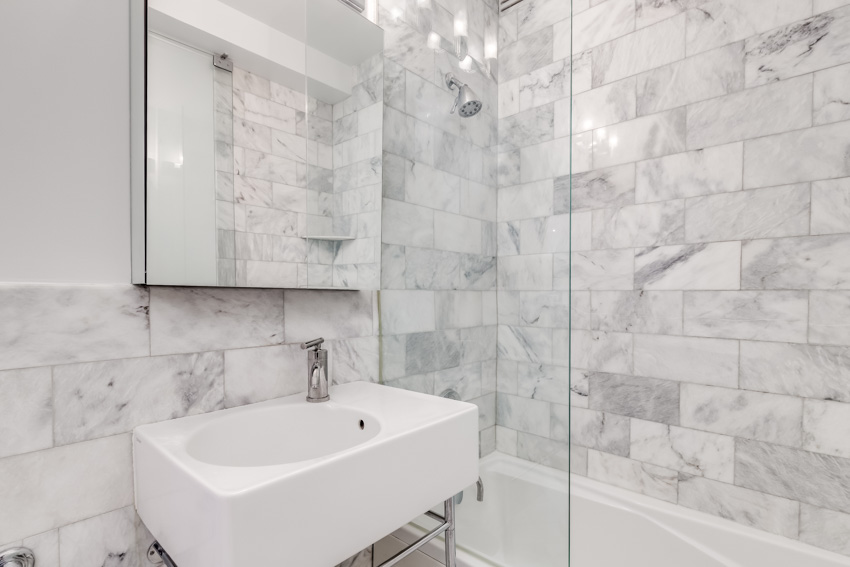
Although not often used for bathrooms, marble is one of the most ideal materials to use in shower walls and floors especially if you are aiming for a timeless feel in the space. With its subtle veining patterns and neutral colors, marble bathrooms can surely be an impressive feat in a home.
Below, we take a look at one of the most popular types of marble — the Carrara marble and how you can use it in your bathroom and shower. Read on to know why it makes a worthy investment for your home.
What Is Carrara Marble?
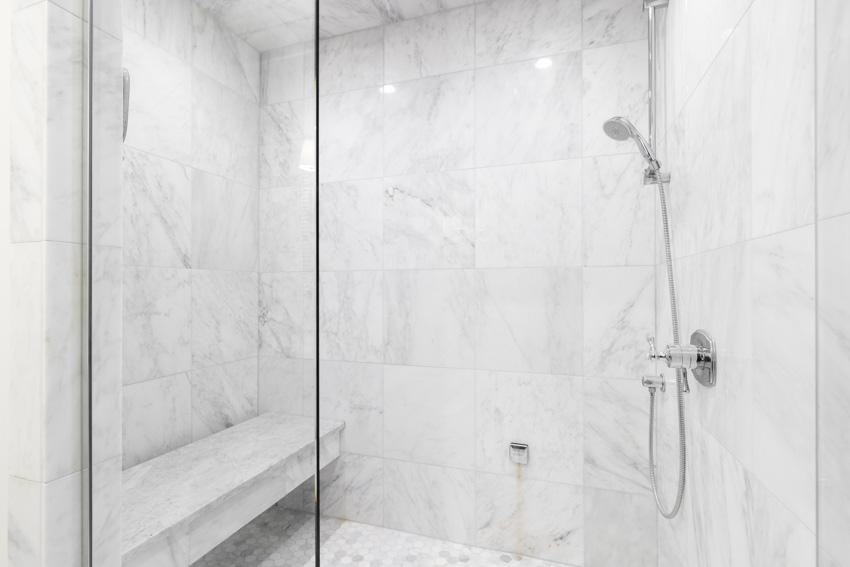
Carrara is a white marble that is extensively used in classical buildings and sculptures. It is characterized by a white, gray or bluish-gray color with small, fine soft to feathery gray linear veins.
Is Carrara Marble Good For Showers?
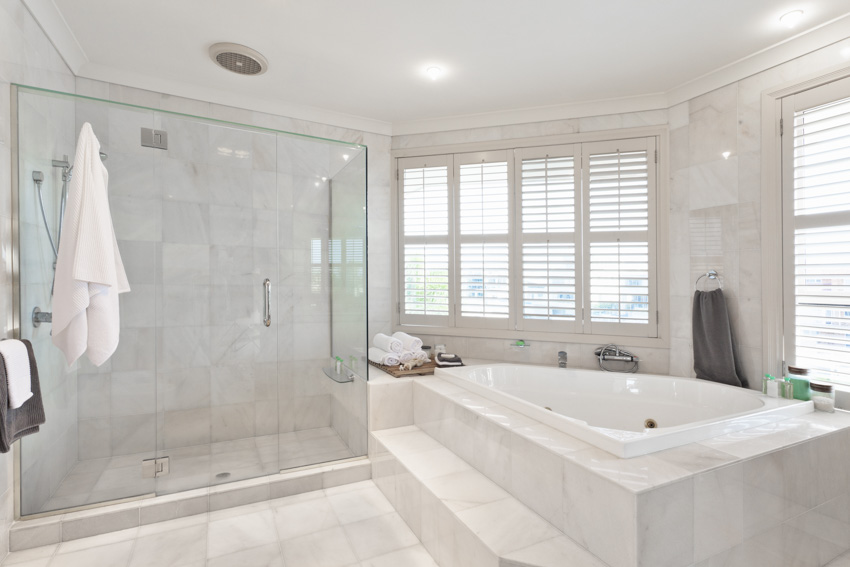
• Appearance: Perhaps one of the main reasons why you should give a Carrara marble shower a try is its classic and cosmopolitan appearance.
Most homeowners are drawn to its distinct, timeless natural beauty. The clean, crisp white color of Carrara marble together with its unique veining pattern can easily give a bathroom an alluring effect.
• Durability and Strength: Marble is formed when a limestone rock is heated to extreme temperatures causing minerals to grow larger and fuse together.
This process gives it its natural durability and makes it resistant to temperature and pressure. As a shower and bathroom material, Carrara marble is durable and can be used for years provided that it is properly sealed and maintained.
• Maintenance: Although Carrara marble showers require more maintenance compared to other materials, you only need simple materials like a soft marble cloth and mild soap detergent to care for it.
• Design flexibility: Can be used to create different looks from classic, retro to contemporary.
Carrara Marble Tile Shower
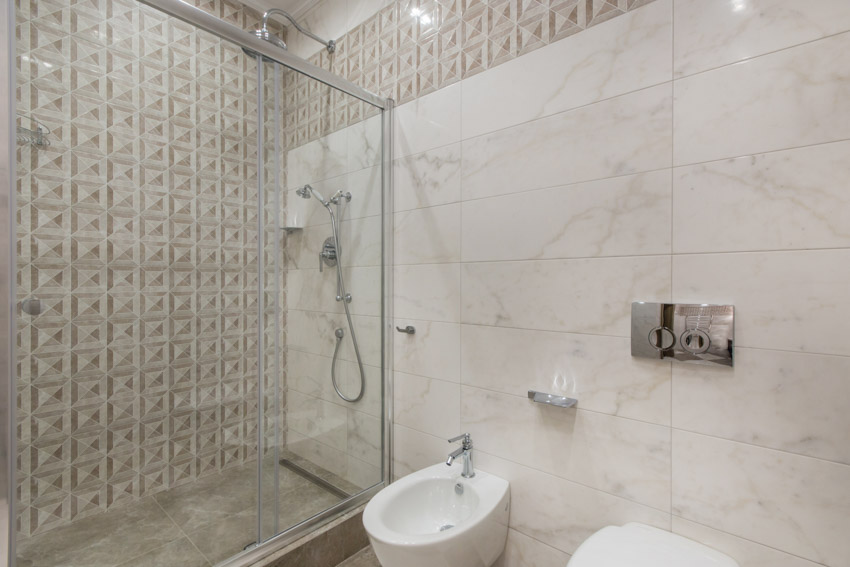
White marble like Carrara looks best when paired with most types of glass shower doors because it maintains the feeling of openness. As an accent, you can pair Carrara marble with stainless steel shower fixtures and faucets, however, if you want to create a more modern look, opt for contrasting black-colored shower fittings and faucet.
• Carrara marble tile shower walls: When used for walls, Carrara marble can instantly give a bathroom a bright, airy feel. White marble with soft veins creates an open aura, whether used in the half or full height of the wall.
To make the most of Carrara marble tile shower walls, compliment them with good lighting design. Also, polished marble is better for walls not only for its practical benefits but also for the unique aesthetics and visual effect that it renders in a space.
For walls, marble tiles which range from 12×12 inches to 16×16 inches can be used, depending on their proportionality to the size of the bathroom. Use with white grout for a more seamless look.
• Carrara marble shower floor: When used as a flooring material, white marble like Carrara can help make your bathroom look more spacious. Light colors create an illusion of space because they reflect light.
Opt for honed Carrara marble tiles for flooring because they lessen the risk of slipping. Unlike polished marble, honed marble creates more traction and is safer to use. See more floor tile ideas to use with Carrara marble here.
• Carrara marble shower panels: Carrara marble shovel panels are another option that can be used for the bathroom shower walls instead of tiles. These are easier to maintain and install because they do not require grouting.
With Carrara marble shovel panels, the look of the marble is the same but maintenance and cleaning time is less. It can be installed on either one wall or all three walls of the shower depending on the design, budget, and requirement. Shower panels are also a less expensive alternative.
Is Honed Or Polished Marble Better In The Shower?
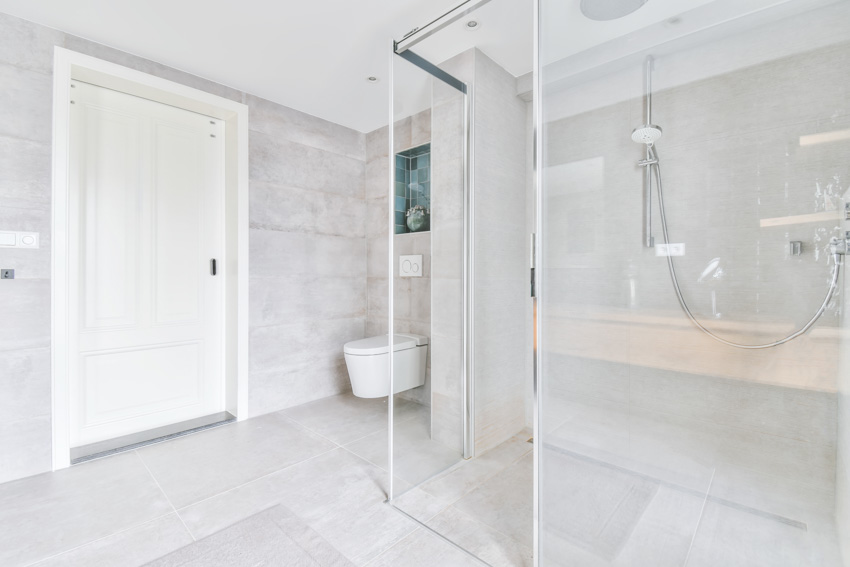
For the shower walls, polished marble is better because it absorbs less water. Honing makes the marble more porous which allows for the absorption of water and spills. If something is spilled on it, the surface needs to be cleared right away to prevent stains.
The bottom line is, regardless of whether you’re mulling over honed vs polished marble, it needs to be sealed especially if it is being used in a wet area like a shower.
How To Clean Carrara Marble Tile Shower
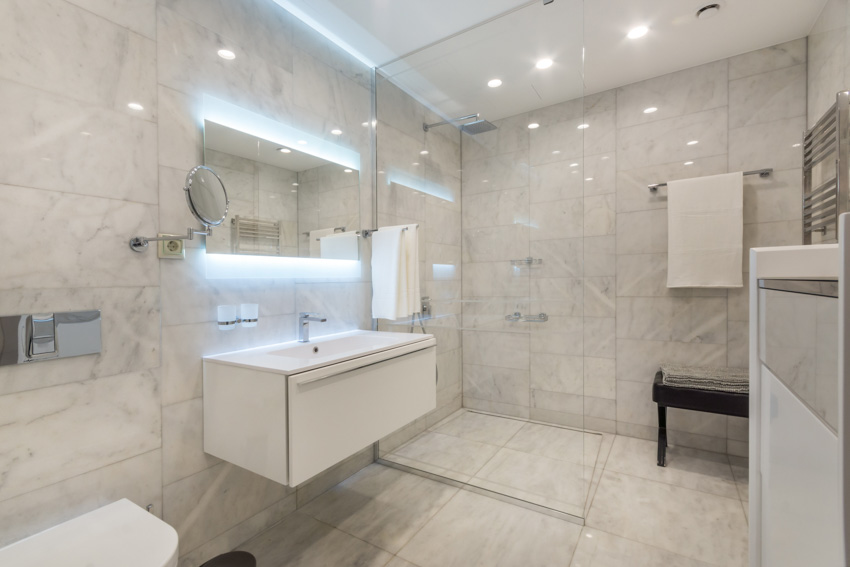
How Often To Clean A Marble Shower
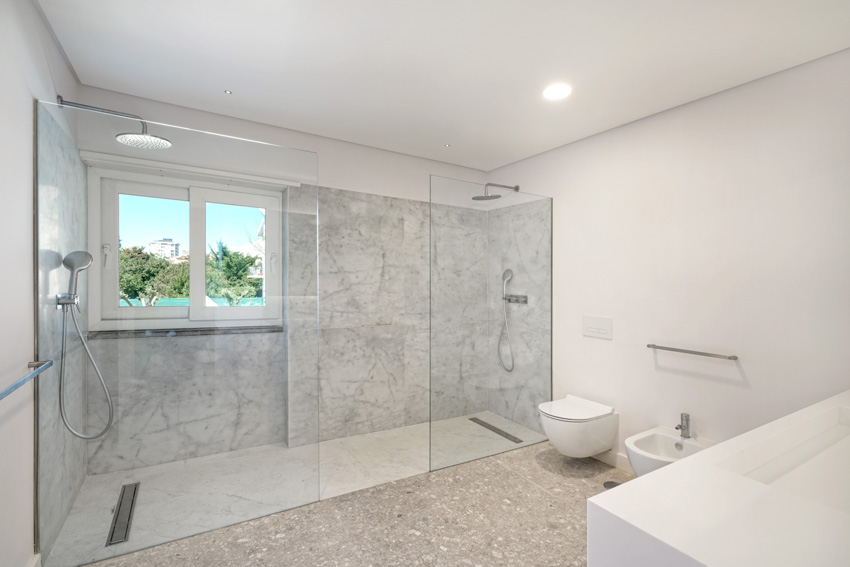
Cleaning Carrara Marble Showers
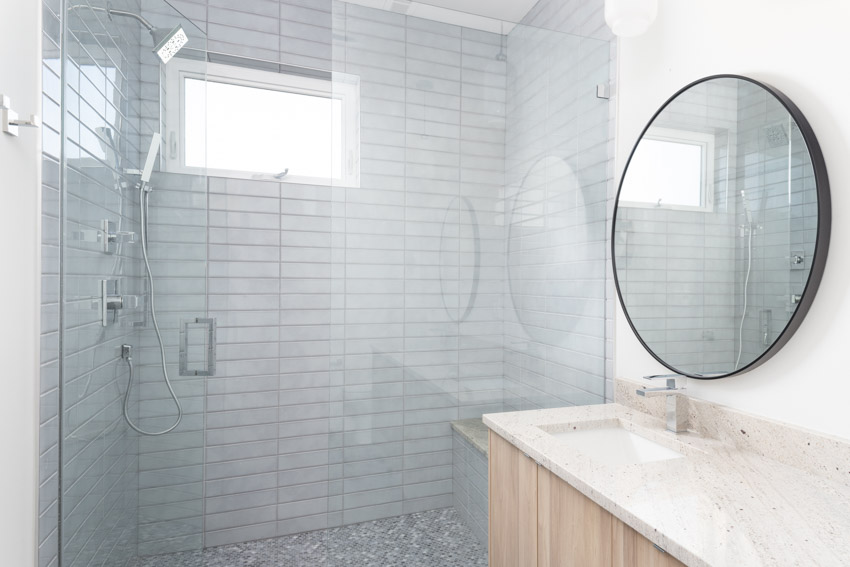
Materials and Tools
• Mild soap with a neutral pH (pH 7) or any cleaning agent made for marble
• Microfiber cloths
• Spray bottle
• Bucket
• Squeegee
Instructions
1. Spray and wipe the marble’s surface: Mix some mild soap with warm water and put it in a spray bottle. Spray the solution on the walls and the floor, and make sure to work from top to bottom. Then using a microfiber cloth, wipe down the surfaces in a circular motion.
2. Rinse well with water: Using a bucket or a handheld shower, rinse down the walls starting from the top down to the bottom. Make sure to remove all the solution’s residue.
3. Dry and buff the marble’s surface: Using a soft microfiber cloth or squeegee, remove all the excess water from the shower walls and floor. Buff the surface using a microfiber cloth. Do this in a large circular motion to make it shiny.
Cleaning Carrara Marble Showers On A Daily Basis
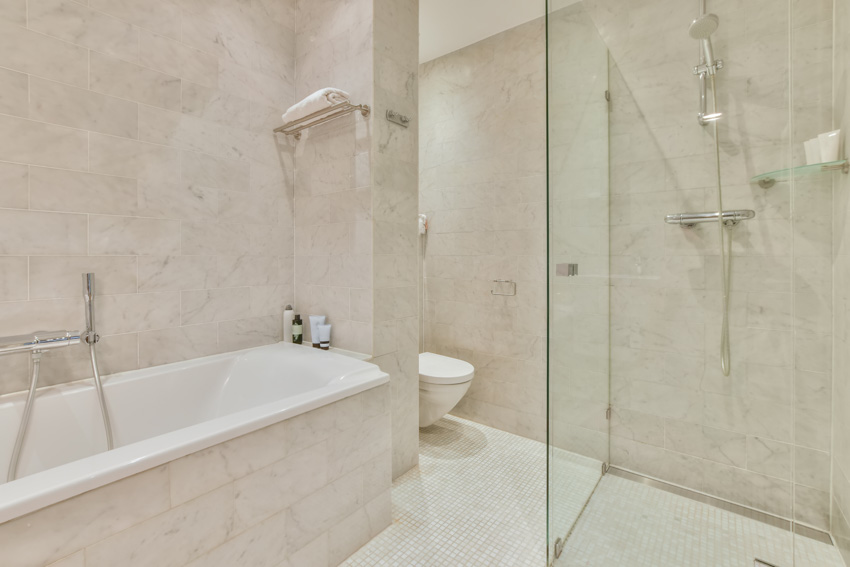
Using a microfiber cloth or squeegee, wipe down water drops starting from top to bottom. Make sure that the walls are fully dried to prevent the growth of molds and mildews.
If you routinely clean your Carrara marble showers on a daily basis, you may only need to deep clean your bathroom once a month.
Biweekly Cleaning of a Marble Shower
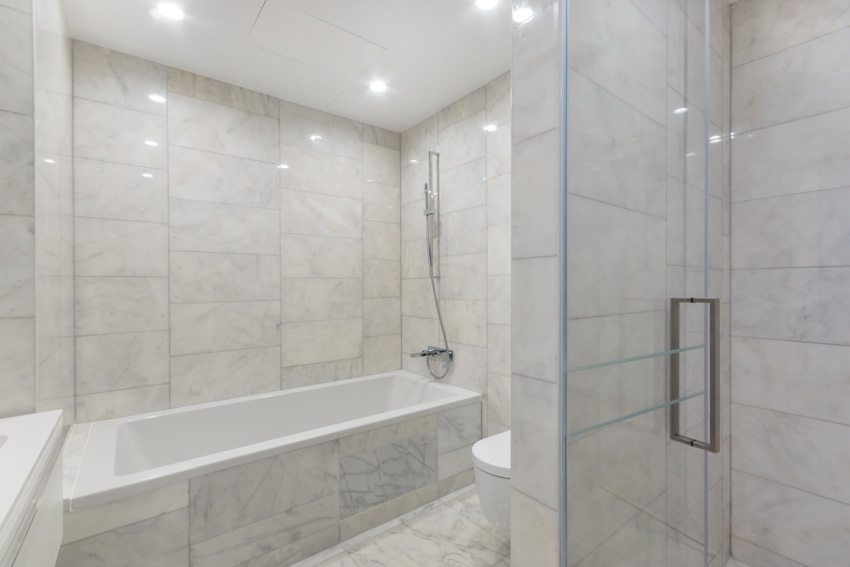
• Using a commercial marble cleaner: Follow the instructions on the product label. Most marble cleaners would require dilution before use.
How To Tackle Tough Stains
• Mold and mildew: Molds and mildews can be removed using a commercial marble cleaner. Do not use bleach as it will harm the stone’s surface.
• Hard water build-up: Mineral deposits around the drains and fixtures can be removed using superfine No. 0000 steel wool. Using a light touch, gently buff away the deposits. Make sure to do this carefully so you don’t scratch the marble’s surface.
• Discoloration from bath products: Saturate a white microfiber cloth with 12 percent hydrogen peroxide. Place the cloth over the stained area of the marble and let it sit for 10 minutes. Then check if the stain is gone. Rinse well with some warm water and dry the area using a soft cloth. Gently buff until the surface shines. For persistent stains, repeat the hydrogen peroxide soak
What To Avoid
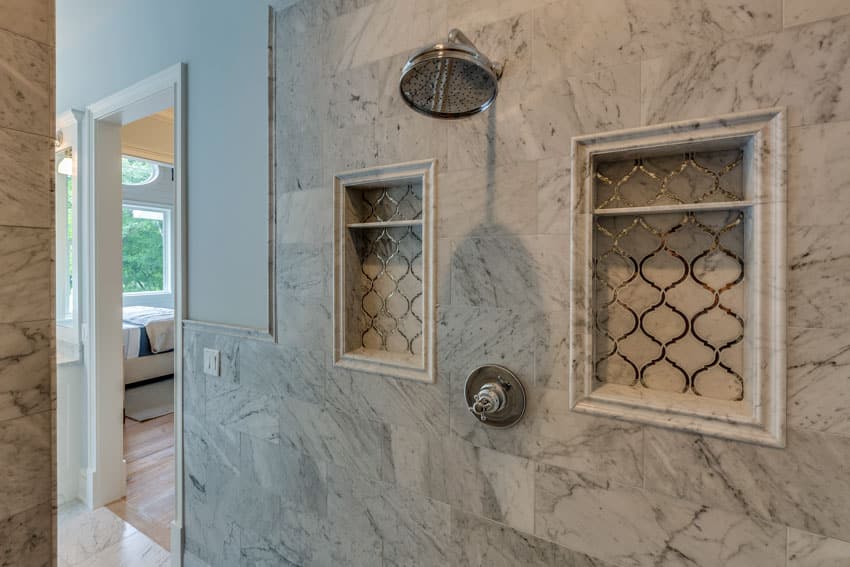
• Choose bath products wisely. Aside from the right cleaners, make sure to use bath products that do not contain dyes or acidic ingredients because they can also harm your Carrara marble shower’s surface.
• Avoid using stiff-bristled cleaning tools. Do not use harsh cleaning tools like scrub brushes, or steel wool because they can permanently scratch the marble.
Do You Need To Seal Carrara Marble In A Shower?
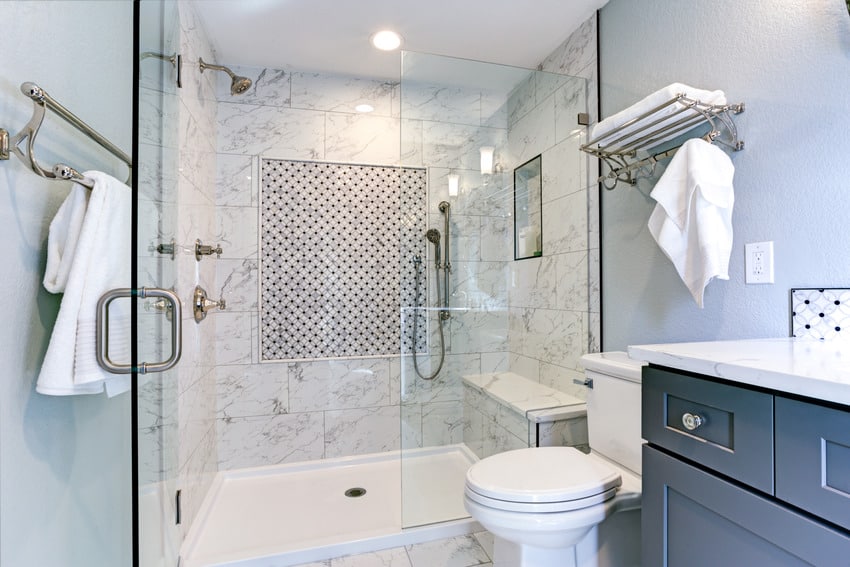
How Often Do You Have To Reseal The Tile In The Shower?

One way to test if marble showers need to be resealed is when water no longer beads up on the surface of the marble. If the shower also becomes wet and the marble looks darker, it also indicates that the surface already needs to be resealed.
See more related content in our article about Carrara marble backsplash on this page.


